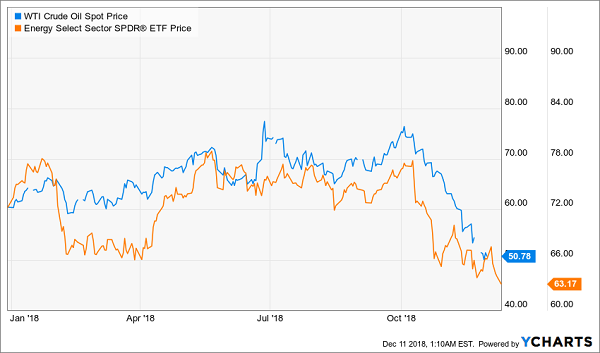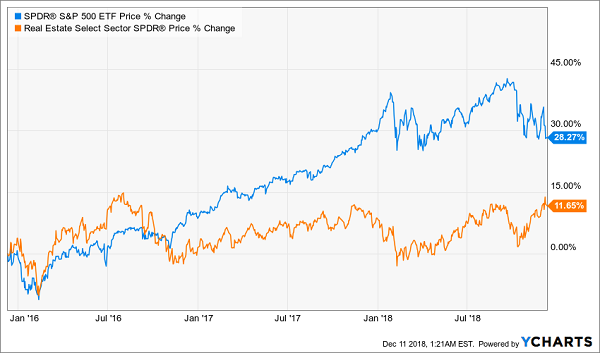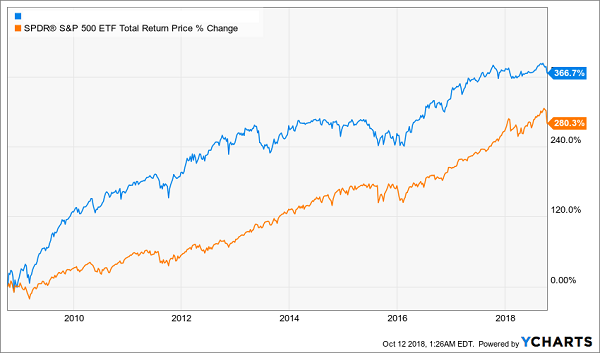5G wireless service is coming and it will change the world. The new fifth generation of wireless networking is just starting to roll out. 5G will soon start replacing 4G, which has been the standard for wireless data transmission for the last half-decade. If you remember how great it was to go from 3G to 4G, 5G is going to be 50 times better. As in 50 times faster than the current 4G average.
More importantly, several new, likely life-changing technologies need the higher data speeds of 5G to function properly. At the top of the list is self-driving cars, or even human driven cars with automatic driving features. To avoid running over cats, children, the center median and other traffic on the road these vehicles will need to gather and process huge amounts of data.
5G will eventually lead to smart buildings and homes – the so-called Internet of Things or IoT. (If you’re interested in IoT be sure to check out new research from my colleague Tony Daltorio.) Life will catch up with science fiction. It is likely that it may be possible to use your new 5G smartphone or a dedicated 5G hotspot device as your all-the-time connection to the Internet.
Before we and our cars can enjoy the benefits of 5G, the infrastructure to support the tremendously higher speeds and much larger amounts of transmitted data must be built out. The current 4G network does not have sufficient capacity to handle the coming increase in data flow.
Much of the wireless and Internet infrastructure is owned by companies that specialize in providing specific parts of the infrastructure. These specialties include data centers, cell towers, and fiber communications networks. Here are three stocks that will see huge benefits from the shift to the next gen 5G wireless system.
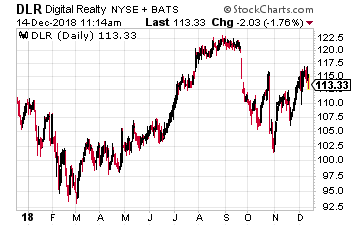
Digital Realty Trust, Inc. (NYSE: DLR) is a data center services provider that is organized as a REIT. The company develops and operates data centers. Digital Realty owns almost datacenters located around the globe. In addition to storage solutions, the company provides interconnectivity solutions between datacenters and the Internet.
The coming 5G speeds means an exponential increase in data that will need to be shared and stored. That’s the business of Digital Realty. Since it’s a REIT, DLR can be counted on as a steady dividend paying stock.
As a player in the high-growth data storage space, this is an income stock that will provide attractive dividend growth.
The company has increased the dividend for 13 straight years, with an average double-digit compound growth rate. Investors can expect the low teens dividend growth to continue, or even accelerate in the 5G era.
The shares currently yield 3.5%.
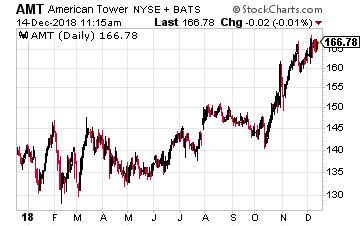
5G connectivity will require more cell towers, spaced closer together. American Tower Corp. (NYSE: AMT) is the largest independent owner of cell towers.
5G will require a shift to small cell and micro-sites to provide uninterrupted, high-speed coverage. AMT owns 40,000 towers that will be retrofitted to provide 5G service. The company has also formed business alliances to install micro-sites in light poles and information kiosks.

AMT is also organized as a REIT. The company has a very high path of dividend growth, increasing the payout by 24% per year compounded for the last five years. Investors can expect AMT to remain at the heart of the 5G roll-out and be able to continue the rapid dividend growth. The shares currently yield 3.3%.
AMT is also organized as a REIT. The company has a very high path of dividend growth, increasing the payout by 24% per year compounded for the last five years.
Investors can expect AMT to remain at the heart of the 5G roll-out and be able to continue the rapid dividend growth.
The shares currently yield 3.3%.
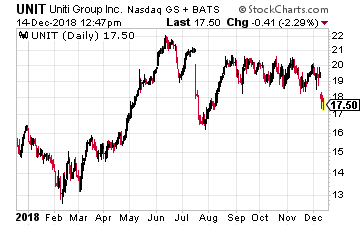 Uniti Group (Nasdaq: UNIT) is a telecommunications REIT focused on fiber optic assets. In recent years the company has focused on acquiring backhaul fiber assets. These are fiber connections between cell towers and the wired Internet.
Uniti Group (Nasdaq: UNIT) is a telecommunications REIT focused on fiber optic assets. In recent years the company has focused on acquiring backhaul fiber assets. These are fiber connections between cell towers and the wired Internet.
Uniti Group has been acquiring fiber networks that connect cell towers to the wired data network. These networks can be leased up to handle higher 5G data speeds without the need to build out additional network infrastructure. This mostly unknown and underground part of the overall data network will be a big winner for Uniti as 5G rolls out.
Currently UNIT is under a legal cloud due to a lawsuit against its largest customer, Windstream Holdings (Nasdaq: WIN). The trial has been completed and the companies are waiting on the judge’s ruling. Until that ruling comes out, the prospects and dividend safety of UNIT are unclear.
Thus, the current 12% yield.
Pay Your Bills for LIFE with These Dividend Stocks
Get your hands on my most comprehensive, step-by-step dividend plan yet. In just a few minutes, you will have a 36-month road map that could generate $4,804 (or more!) per month for life. It's the perfect supplement to Social Security and works even if the stock market tanks. Over 6,500 retirement investors have already followed the recommendations I've laid out.
Click here for complete details to start your plan today.
Source: Investors Alley




